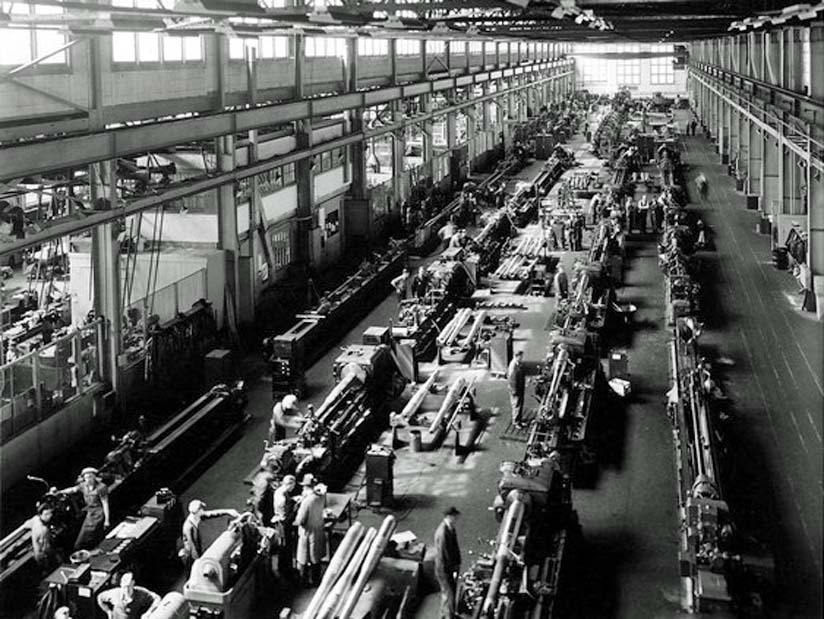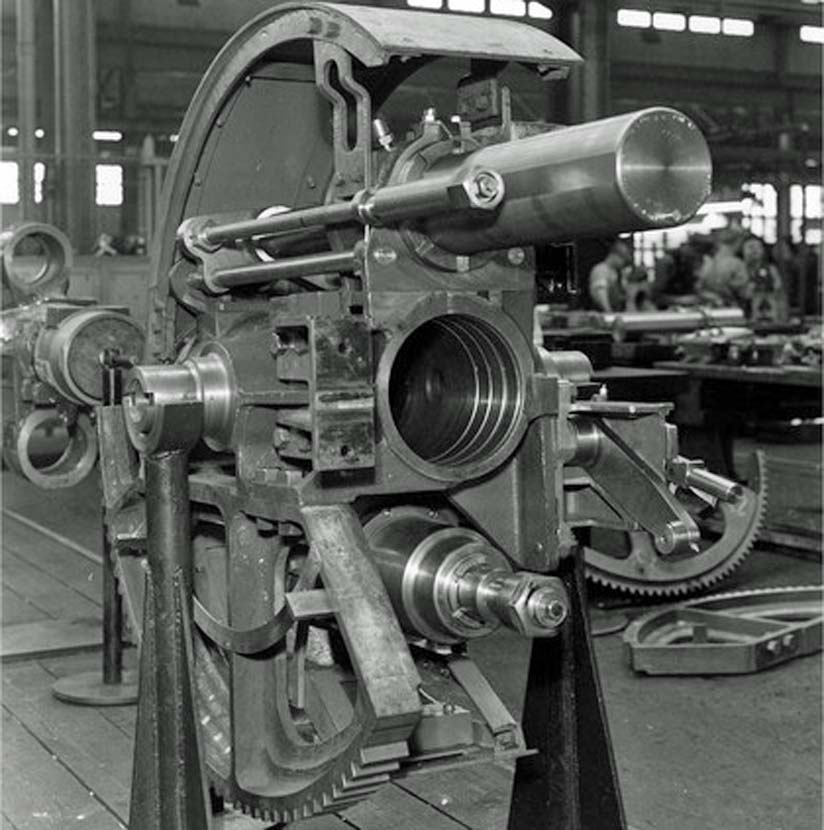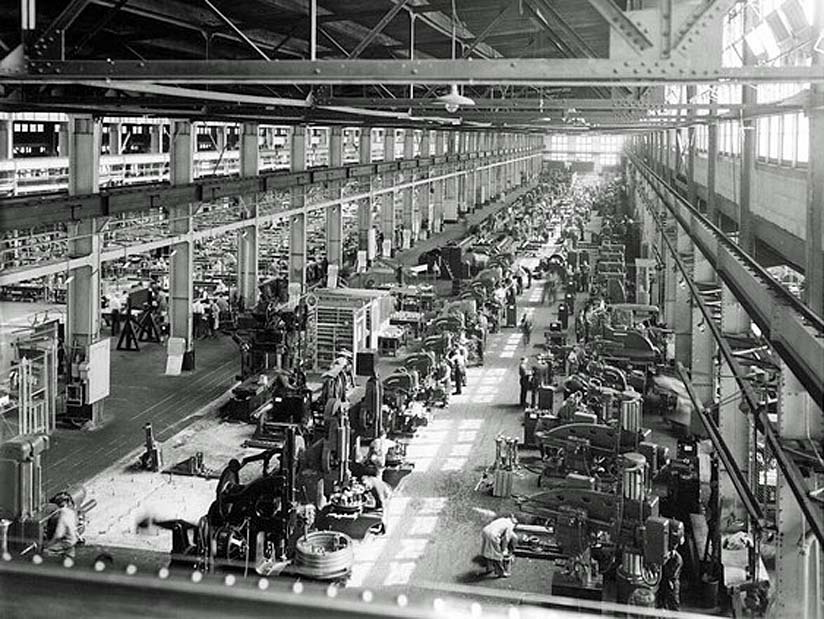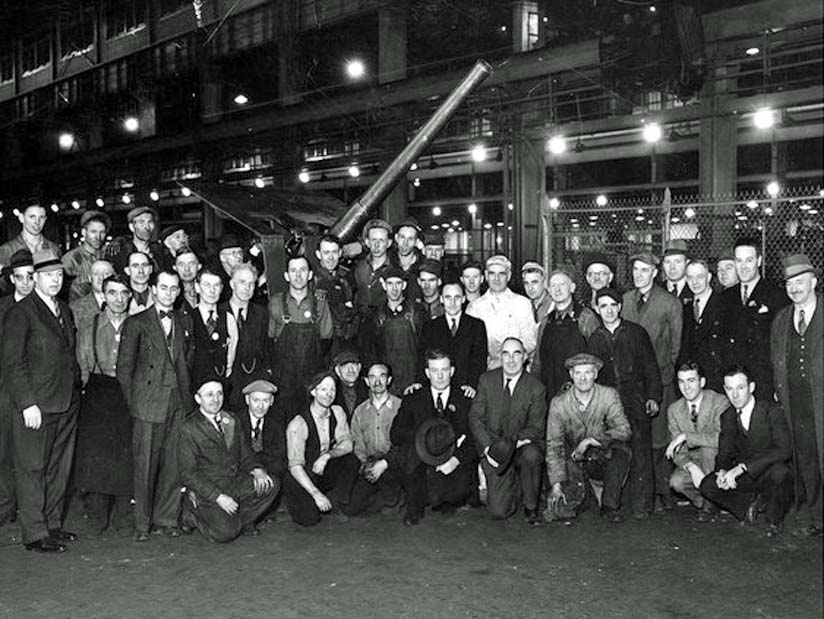
Calgary Alberta - When the Second World War started, thousands of Calgarians enlisted in the Armed Forces, but hundreds of others did their
part for the war effort by staying home and manufacturing munitions.
In 1940, the Canadian Pacific Railway's (CP) Ogden Shops became a gun factory, turning out naval artillery and mountings for the Canadian Navy, and later,
105 mm howitzers for the U.S.
Ogden Shops, built in 1913 as the railway's western repair depot, had always been a busy facility, but the pace increased during the war, with CP employees
working on the 12 pounders and other guns made in Calgary.
Although CP employees were experienced in machining, much of the equipment required to service steam locomotives and rail cars was not suitable for the
precision work required to make guns.
As the pace of gun building increased, the huge shop was refitted with up-to-date machine tools, and with single purpose machines for such tasks as boring and
rifling the long gun barrels.
Art Boote, who lived within sight and sound of the Ogden Shops, remembers being inside the cavernous facility before the war, but access was much more
difficult after the war started.
Security was tight, and groups of soldiers, eight abreast, marched around the facility day and night, he said.
But he knew something of what was going on inside.
His father, Walter, worked there.

Walter Boote came to the Ogden Shops around 1924 with good credentials, he was a licensed machinist, and he had worked for Ford Motor Co. in
Detroit.
But a year later, after a disagreement with his supervisor, he quit and opened the Ogden Garage.
When the shops became a munitions factory, his machining skills were needed.
"I don't know if he got called in, or volunteered, but he went in right away when they started making munitions," said Art, who took over the family
garage in 1952 and ran it until his retirement in 1995.
While Walter made gun barrels, his wife ran the garage, with the help of another woman whose husband worked in the shops.
Art Boote estimates the shops employed as many as 2,000 workers at the height of the war.
Meanwhile, CP's Angus Shops in Montreal were building Valentine tanks, many of which were sent to Russia, and marine engines for corvettes, frigates, and
landing craft.

Ogden Shops, named after a senior CP executive, were a welcome addition to Calgary's economy when they opened in 1913.
Most of the employees lived in the community of Ogden that grew nearby, and the shop set the rhythm for daily life.
"We kept time by the whistle from the Ogden Shops," said Art Boote.
The whistle signalled the start and end of shifts and breaks.
It was so much a part of Ogden life, it lent its name to the community's local history book.
"That's where my dad got the name for the book, the Ogden Whistle," said Boote.
Ogden was not spared the effects of the Depression, but rather than fire people outright, CP put people on "short time," said Arthur
Teale.
"The men would work for 10 or 14 days a month," he said.
Teale's father, Bert, worked in the shops from the day they opened until he retired in 1957.
His specialty was gears, and when the shops started making munitions, Bert Teale was in charge of making gears for the big guns.
Arthur Teale started working at the shops in 1940 as a machinist, but after the attack on Pearl Harbor, he enlisted in the military.
He was part of the railway corps, rebuilding railways in France and Belgium as the Allies advanced against the Germans.
Alfred Taylor of Calgary was too young to work in the shops during the war, but he went to work for CP in 1947.
He wanted to be a locomotive engineer, like his father, but a simple test involving a shoebox full of coloured threads revealed a slight colour
blindness.
It meant he would not be able to see the coloured signals properly.
So he became an apprentice machinist in the Ogden Shops.
"It was booming then," he said.

The railway's steam locomotives had suffered from neglect, as manpower and resources had been devoted to the war effort, but Ogden Shops kept busy
rebuilding the steam locomotives.
"At one time, they were turning out one engine a day," Taylor said.
While Taylor never worked on the guns during the war, he had the opportunity decades later when the Naval Museum of Alberta acquired one of the Ogden built
guns in Eastern Canada.
When it was brought back to Calgary, it was missing its sights, so Taylor copied the sights from another gun, building the missing equipment from
scratch.
In June 2001, the operation of the shops was taken over by Alstom Transportation Services, a multinational corporation that builds and repairs trains all over
the world.
Though it's under another banner, the Ogden whistle still blows, and many nearby residents still rely on it to remind them of the time of day.
"We hear it at 08:00 when work starts, at 10:00 when it blows for coffee break, and 10 minutes later, when the break is over," said Art
Boote.
The whistle blows for the noon lunch break, the afternoon coffee break, and quitting time.
"They took a poll among the residents of Ogden when CP wanted to quit blowing that whistle," said Boote.
"Almost 90 percent wanted them to keep on doing it."
David Bly.
(because there was no image with original article)
(usually because it's been seen before)
provisions in Section 29 of the Canadian
Copyright Modernization Act.

